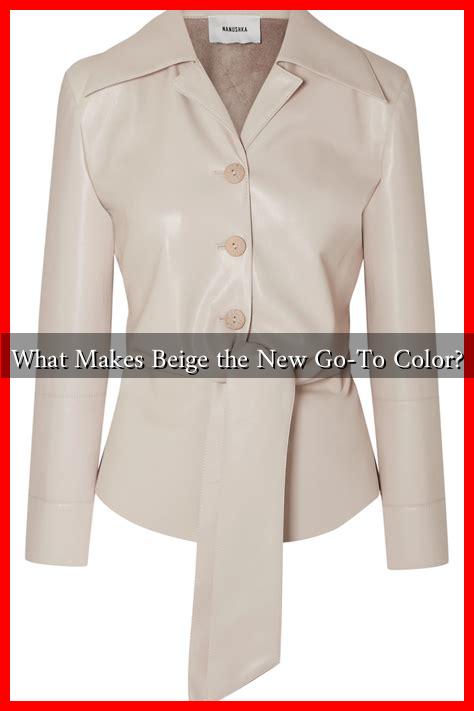-
Table of Contents
What Makes Beige the New Go-To Color?
In recent years, the color beige has made a remarkable comeback, emerging as a favorite in various design and fashion sectors. Once considered bland or uninspired, beige is now celebrated for its versatility and warmth. This article explores the reasons behind beige’s resurgence, its applications in different fields, and how it has become the new go-to color for many.
The Psychological Appeal of Beige
Colors have a profound impact on our emotions and perceptions. Beige, often associated with neutrality and calmness, offers a soothing backdrop that can enhance any environment. Here are some psychological aspects that contribute to its appeal:
- Warmth and Comfort: Beige evokes feelings of coziness and safety, making it an ideal choice for home interiors.
- Neutrality: As a neutral color, beige pairs well with a wide range of other colors, allowing for creative freedom in design.
- Timelessness: Unlike trendy colors that may fade in popularity, beige has a classic quality that ensures longevity in style.
Beige in Interior Design
In the realm of interior design, beige has become a staple for creating inviting spaces. Designers are increasingly opting for beige as a primary color for walls, furniture, and decor. Here are some reasons why:
- Versatile Backdrop: Beige serves as an excellent canvas for various design styles, from modern minimalism to rustic charm.
- Enhances Natural Light: Beige reflects light beautifully, making spaces feel larger and more open.
- Complementary to Textures: The subtlety of beige allows textures—like wood, fabric, and stone—to shine without overwhelming the space.
For instance, renowned interior designer Kelly Wearstler often incorporates beige into her designs to create a sense of balance and harmony. Her projects showcase how beige can be both elegant and approachable, appealing to a wide audience.
Beige in Fashion
Beige’s influence extends beyond interiors; it has also made significant waves in the fashion industry. Designers are embracing beige for its versatility and ability to convey sophistication. Here are some trends:
- Seasonless Fashion: Beige is not confined to a particular season, making it a staple in year-round wardrobes.
- Layering Opportunities: Beige pieces can be easily layered with other colors and patterns, allowing for creative outfit combinations.
- Inclusivity: Beige tones can complement a wide range of skin tones, making it a universally flattering choice.
Brands like COS and Uniqlo have successfully integrated beige into their collections, showcasing its adaptability and appeal. According to a report by the fashion forecasting agency WGSN, beige is projected to be a dominant color in upcoming seasons, further solidifying its status in the fashion world.
Beige in Branding and Marketing
In branding, color plays a crucial role in consumer perception. Beige is increasingly being used by companies to convey a sense of reliability and approachability. Here’s how brands are leveraging beige:
- Trustworthiness: Brands that use beige often appear more trustworthy and stable, appealing to consumers looking for reliability.
- Minimalism: The simplicity of beige aligns with the minimalist trend, attracting consumers who prefer clean and uncluttered aesthetics.
- Eco-Friendliness: Many brands use beige to evoke a connection to nature, aligning with the growing demand for sustainable products.
For example, companies like Apple and IKEA have utilized beige in their branding to create a sense of calm and simplicity, resonating with their target audiences.
Conclusion
Beige has transformed from a color often overlooked to a celebrated choice in various sectors, including interior design, fashion, and branding. Its psychological appeal, versatility, and timelessness make it an ideal go-to color for many. As we move forward, it is clear that beige will continue to play a significant role in shaping our environments and styles. Whether you’re redecorating your home or refreshing your wardrobe, embracing beige can lead to a harmonious and sophisticated aesthetic.
For more insights on color trends and design, visit Color Psychology.


